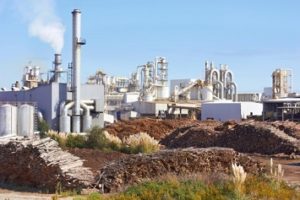Final amendments to the National Emission Standards for Hazardous Air Pollutants (NESHAP) for combustion sources at pulp and paper mills leave in place existing emissions limits while imposing new and revised requirements affecting opacity, monitoring, testing, and reporting.
The amendments also eliminate the exemption from emission limits during periods of startup, shutdown, and malfunction (SSM). The SSM exemption was found illegal in 2008 by the U.S. Court of Appeals for the D.C. Circuit, which ruled that emissions requirements must be met at all times. Since then, the EPA has used the occasion of NESHAP amendments for many sectors to remove the exemption, as well as all other provisions associated with the exemptions (e.g., emissions monitoring during SSM).
The current set of amendments follows EPA’s completion of its residual risk and technology review (RTR), a Clean Air Act provision that directs the Agency to determine if NESHAPs should be revised both to ensure that the rules protect public health with an ample margin of safety and to respond to technological improvements in air quality control for the affected sources.
Affected Sources
The NESHAP for chemical recovery combustion sources at kraft, soda, sulfite, and stand-alone semichemical pulp mills (40 CFR part 63, subpart MM) was originally promulgated January 12, 2001. Regulated sources at these facilities include kraft and soda recovery furnaces, smelt dissolving tanks (SDTs), and lime kilns; kraft black liquor oxidation (BLO) units; sulfite combustion units; and semichemical combustion units. The EPA estimates that there are currently 108 major source pulp and paper mills operating in the United States that conduct chemical recovery combustion operations, including 97 kraft pulp mills, 1 soda pulp mill, 3 sulfite pulp mills, and 7 stand-alone semichemical pulp mills.
This NESHAP does not apply to noncombustion processes at mills, which are covered by a separate NESHAP at 40 CFR part 63, subpart S.
Limits Found Protective
Under the residual risk review, the EPA must evaluate the risk to public health remaining after application of the technology-based standards and revise the standards, if necessary, to provide an ample margin of safety to protect public health or to prevent—taking into consideration costs, energy, safety, and other relevant factors—an adverse environmental effect. The EPA says it has determined that the current standards provide an ample margin of safety and confirm the Agency’s previous finding of the absence of adverse environmental effects.
Technological Review
Based on its technological review, the Agency determined that there are developments in practices, processes, and control technologies that warrant revisions to the NESHAP. Accordingly, the following amendments have been issued:
- A revision of the opacity monitoring allowance for all recovery furnaces equipped with electrostatic precipitators (ESPs) from 6 percent to 2 percent;
- A revision of the opacity monitoring allowance for all lime kilns equipped with ESPs from 6 percent to 3 percent;
- Addition of a requirement for recovery furnaces and lime kilns equipped with ESPs to maintain proper operation of the ESP automatic voltage control (AVC);
- Addition of the aforementioned ESP requirement and wet scrubber parameter monitoring for emissions units equipped with an ESP followed by a wet scrubber; and
- Provision of alternative monitoring, specifically scrubber fan amperage, as an alternative to pressure drop measurement for SDT dynamic scrubbers operating at ambient pressure and low-pressure entrainment scrubbers on SDTs where the fan speed does not vary.
Other Amendments
In addition to elimination of the SSM exemption, the Agency is also issuing several amendments not associated with the technology review:
- Adding electronic reporting requirements for semiannual compliance reports;
- Updating ongoing monitoring and testing requirements for emissions monitoring systems; and
- Requiring periodic stack testing and electronic reporting of stack test results.
The EPA estimates the nationwide capital costs associated with all new requirements at $3.8 million and the nationwide annual costs at $0.97 million to $1.0 million per year at 3 percent and 7 percent interest rates respectively.
Compliance with the new provisions is required by October 11, 2019, with the exception of the first periodic performance test, which must be conducted by October 13, 2020, and the date to electronically submit performance test data, which is within 60 days of completing the test.
The amendments were published in the October 11, 2017, FR.

